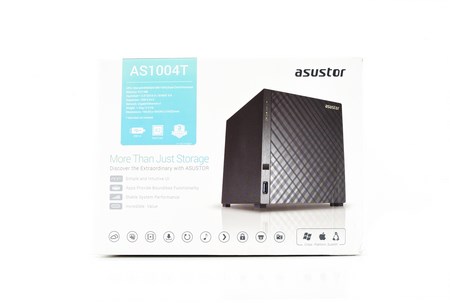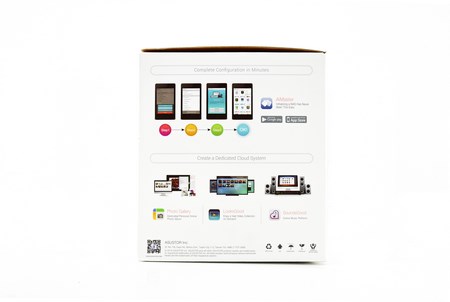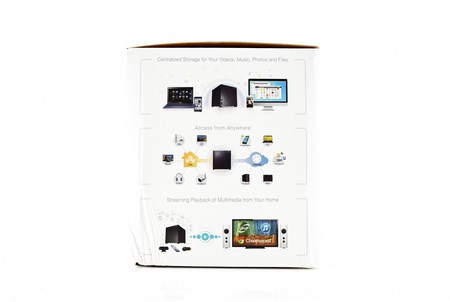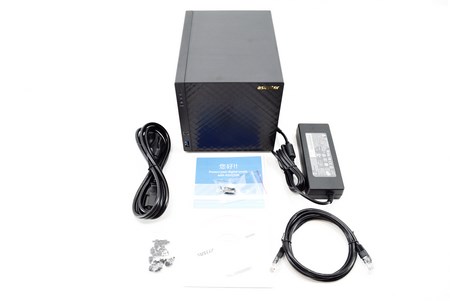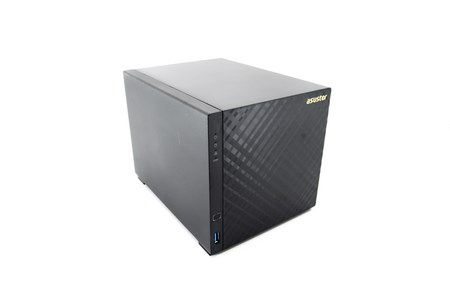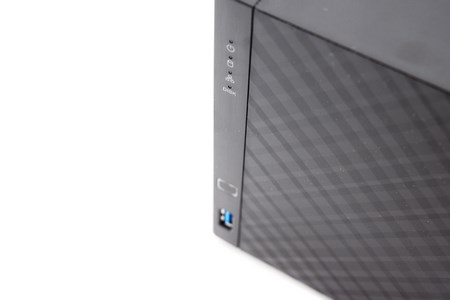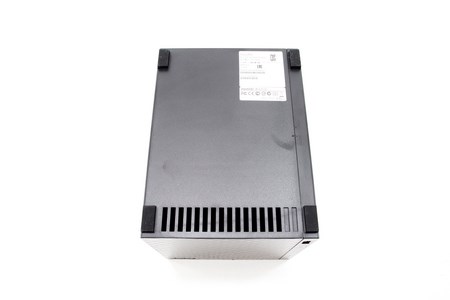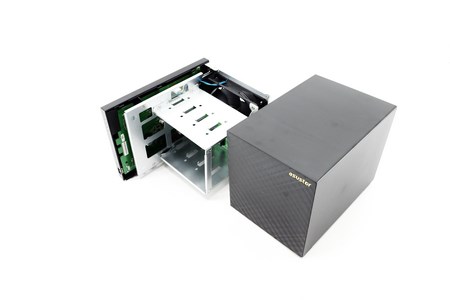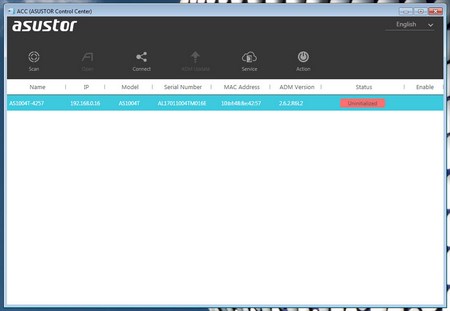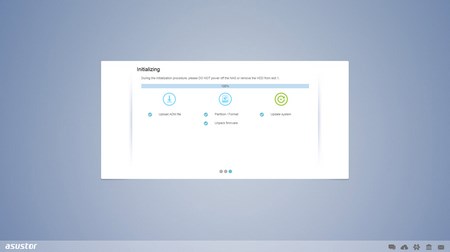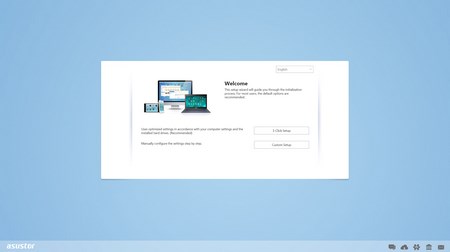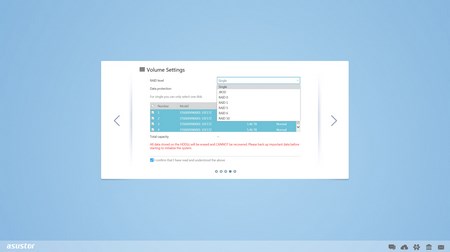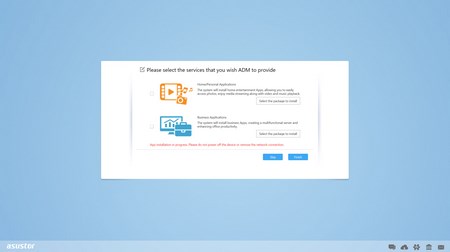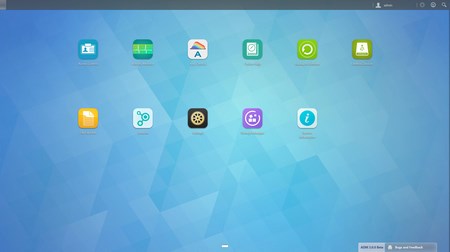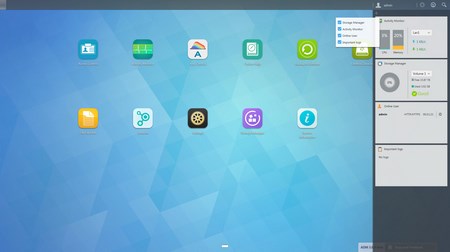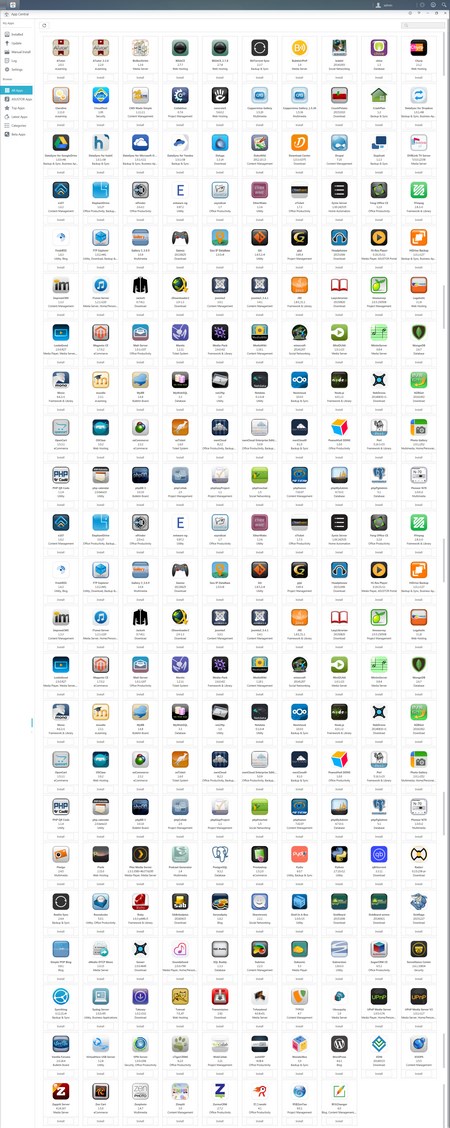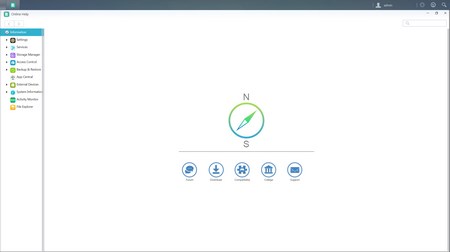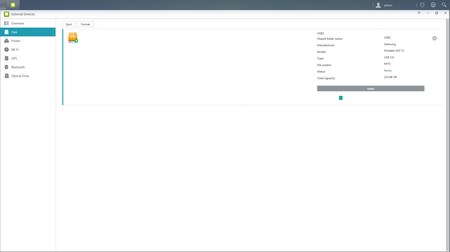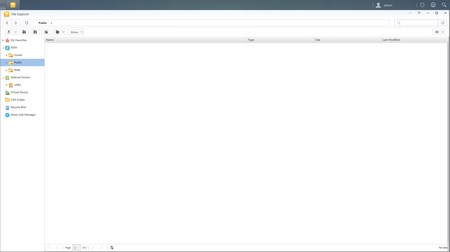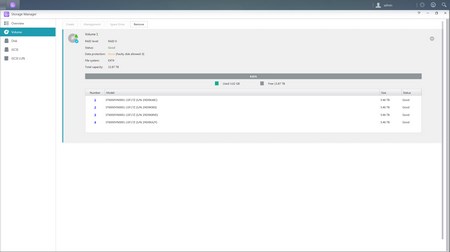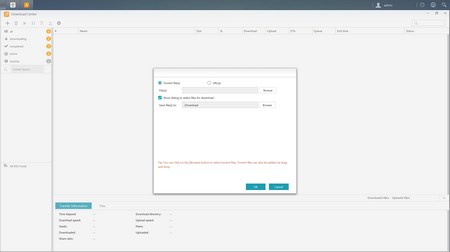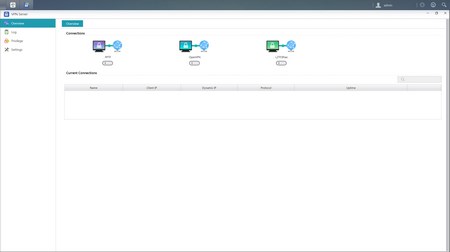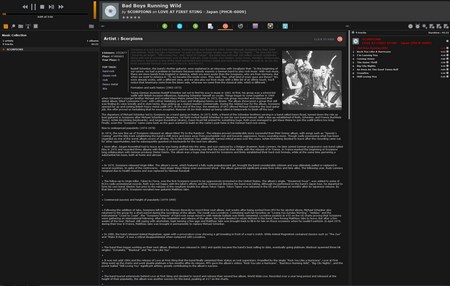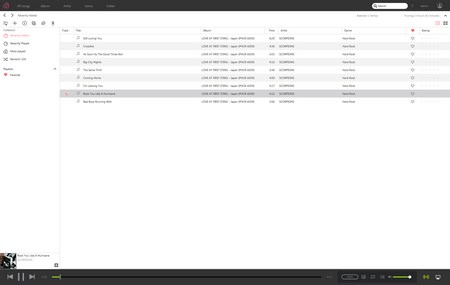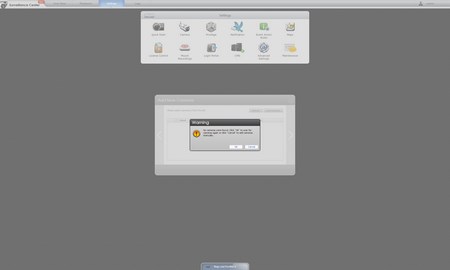INTRODUCTION
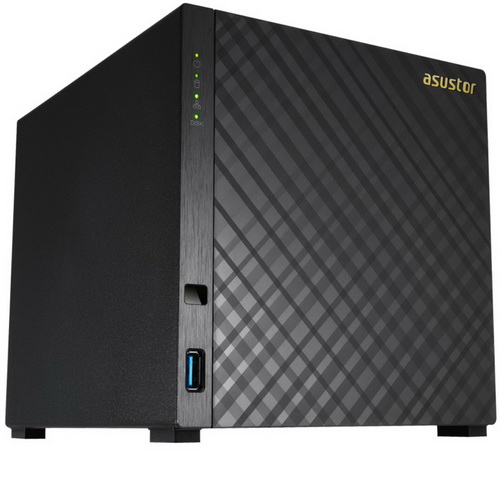
Many years ago the only people who were even remotely interested in getting their hands on a network attached storage device were large office and enterprise users who wanted to share data between many computers in a local network. Today things have changed quite a bit and so network attached storage devices are no longer just for local data sharing but can be used to cover a much wider range of needs (which is why many people consider them to be servers) so they can also be used to record stream from multiple USB and IP cameras (network video recorder), download files either directly or via the torrent protocol (download server), share data anywhere around the world (cloud sharing server), stream audio and video onto stationary and mobile devices (media server), playback video onto TV screens (media player), host websites (web server), send and receive emails (email server) and much more. ASUSTOR released the "entry" level AS1004T model a few months back and today we're here to check and see what it has to offer.
Founded in 2011, ASUSTOR Inc. was established via direct investment from ASUSTeK Computer Inc. The ASUSTOR brand name was created as a portmanteau of “ASUS” and “Storage”. ASUSTOR is a leading innovator and provider of private cloud storage (network attached storage) and video surveillance (network video recorder) solutions, also specializing in the development and integration of related firmware, hardware and applications. We are devoted to providing the world with unparalleled user experiences and the most complete set of network storage solutions possible.
Just like most entry level NAS servers the AS1004T doesn't use one of the higher performance dual/quad-core Intel/AMD CPUs (with built-in GPUs) so if plenty of power is what you're looking for this is really not the model for you. Instead ASUSTOR has equipped it with a Marvell Armada 385 1GHz dual-core SoC (system-on-chip) that comes with support for hardware encryption, 512MB DDR3 SDRAM (not expandable) and a 16MB flash module. The AS1004T also features a total of four 3.5" SATA III bays (can be configured in single, JBOD and RAID 0/1/5/6/10), two USB 3.0 ports and an RJ45 Gigabit Ethernet port. Also since the Marvell Armada 385 SoC was not designed with media playback in mind the AS1004T lacks an HDMI video output (quite unfortunate considering that its size and design would also make it ideal as a media player).
SPECIFICATIONS AND FEATURES

PACKAGING AND CONTENTS
The specifications and main product features are listed at the front of the box right next to a large product picture.
Some of the available apps are showcased on the left side.
You can take a look at some of the possible uses of the AS1004T on the right side of the box.
At the rear of the box ASUSTOR has placed the features list in 19 languages.
A thank you note is the first thing you will see once you open the box.
The NAS is wrapped inside a plastic bag and placed between two thick foam spacers (the rest of the bundle is placed inside a cardboard box).
Bundled with the NAS are its power adapter and cord, Ethernet cable, mounting screws, software CD and the user guide.
THE AS1004T
Measuring just 218mm in depth, 165mm in height and 164mm in width the 1.5kg heavy AS1004T is quite compact for a 4-bay NAS.
On the left side of the fascia we find the activity LEDs (power/HDD/Ethernet/USB), an IR receiver and a USB 3.0 port.
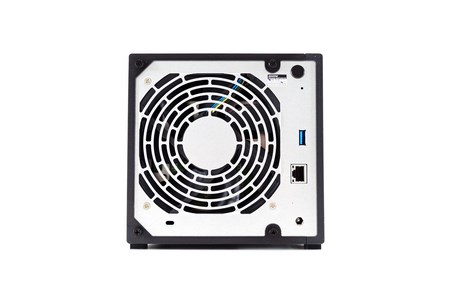
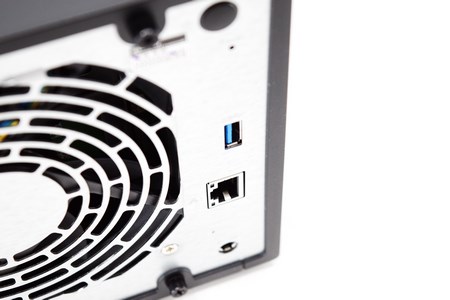
At the rear of the AS1004T we see a 120mm exhaust fan and the power button right over a reset button, the USB 3.0 port and the DC in.
The AS1004T sits ontop of 4 rubber feet and as you can see part of the base is perforated.
Opening the plastic enclosure is easy, just remove the 4 screws from the rear and pull the largest part backwards.
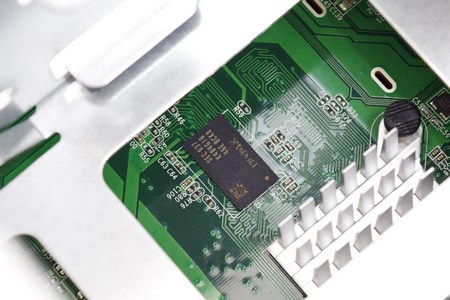
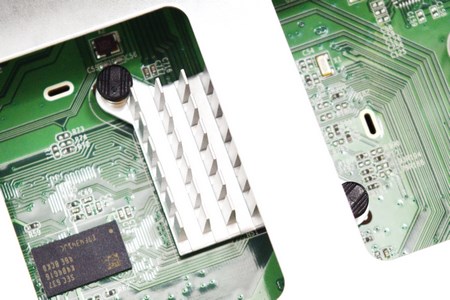
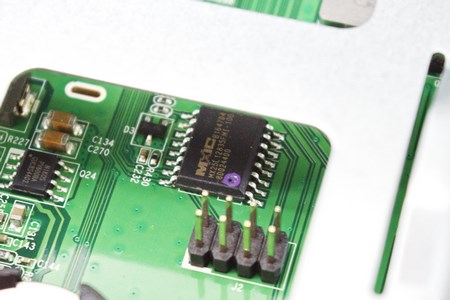
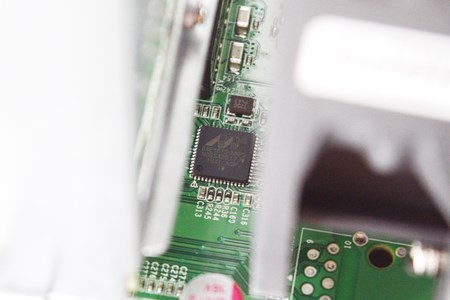
On the mainboard we find the 512MB DDR3 SDRAM module, Marvell Armada 385 SoC (underneath a medium sized heatsink), 128Mbit flash memory module and the Marvell Alaska Gigabit Ethernet module.
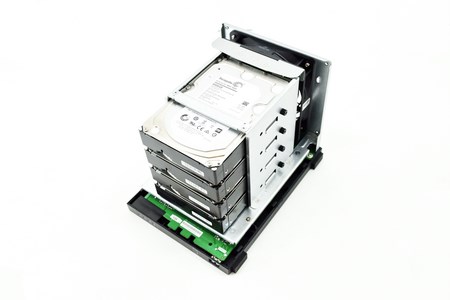
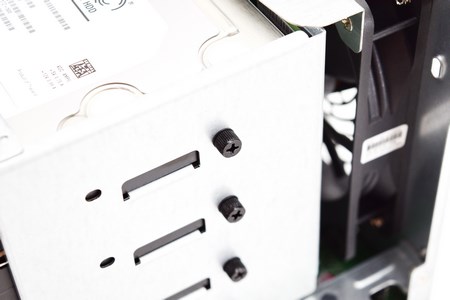
The AS1004T is compatible only with 3.5" drives which are secured in place via 2 thumbscrews placed on both sides (1 on each).
SETUP
The easiest and fastest way to setup the unit is to launch the ASUSTOR control center software, wait until it locates the NAS in your local network and then start the setup procedure.
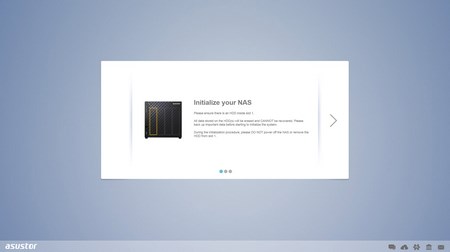
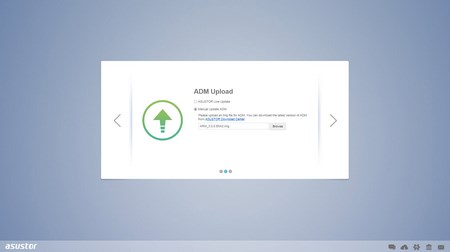
You may need to update the firmware of the unit and you can do that either directly from the ASUSTOR server or from a firmware file (if you have it from the official ASUSTOR page).
The entire initialization process takes but a few minutes to complete.
After that you can choose between the fast 1-click setup and the custom setup (typically we followed the custom route).
Via the custom route you will need to set the server name (if you don't like the default one), server password, time zone, language, network options and configure the drives (single/RAID/JBOD) in order to proceed.
ASUSTOR has inserted a new page in the setup procedure from where you can choose to automatically install apps based on the type of usage you plan for the NAS (Home/Personal or Business).
ADM 3.0.0.B5A2 PART 1
We used the latest 3.0 Beta version to test the AS1004T and as you can all see it pretty much features the same basic design as previous versions. So once again the main screen includes all the applications installed by default (You can access the layout settings menu and logout, restart or shutdown the NAS from the admin selection on the far right of the top bar).
The new performance bar can be configured to contain the tasks you want to check and not all of them.
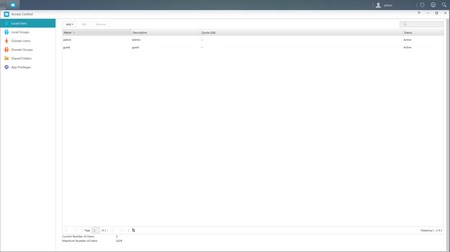
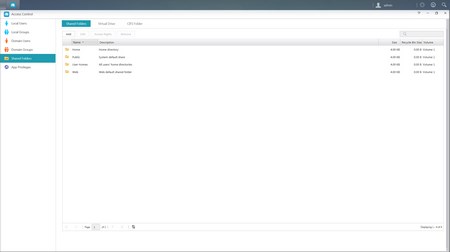
As with all ADM versions to date from the Access tab you can add/remove user accounts, groups, domain users, domain groups and you can also create shared folders and set application privileges.
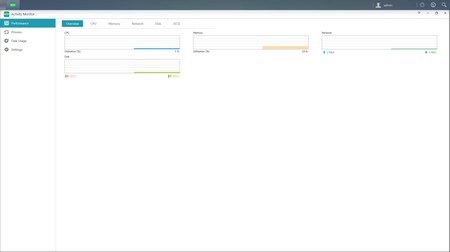
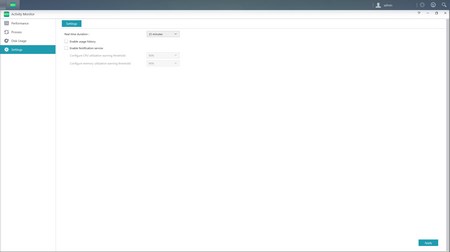
The Activity Monitor allows the end user to monitor the NAS so from here you can check the available space on the installed drive(s), check the CPU/Memory/Network utilizations and see what processes are currently running.
ASUSTOR may not have exactly as many applications as QNAP but they make more and more available everyday so aside the "official" ones their App Central has many more (current total is 228).
You can access information regarding all aspects of the ADM OS from within the Online Help tab.
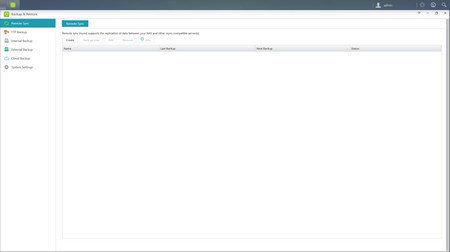
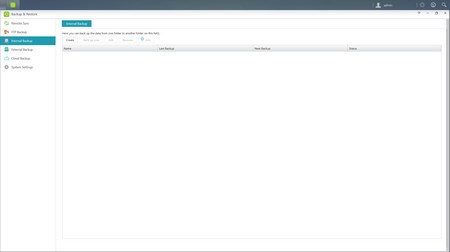
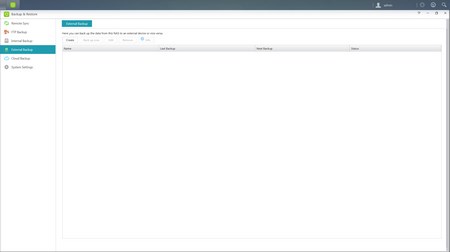
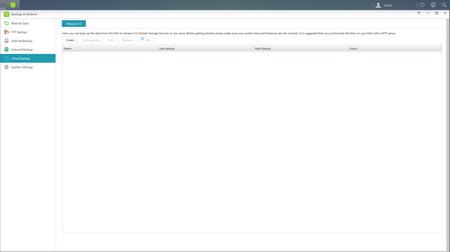
The Backup & Restore tab allows you to remote sync options, setup FTP/Internal/External backup jobs, configure the one touch backup (front USB port), use the cloud backup feature (via Amazon S3) and also adjust the system settings.
From the External Devices tab you can check the state of attached drives, format them, prepare them for ejection and you can also check the state/adjust the settings for attached printers, Wi-Fi adapters and UPS devices.
The File Explorer page allows you to upload and download files from and onto the NAS without much effort (although i do recommend mapping a drive letter from your network options in Windows).
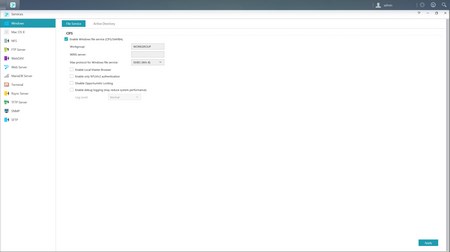
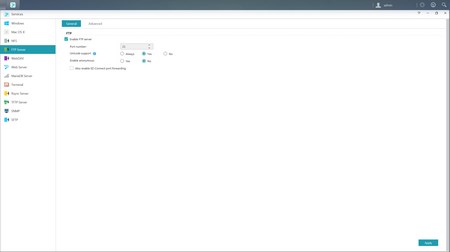
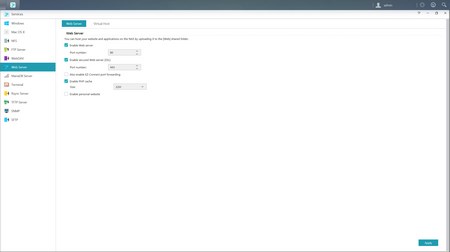
Under the Services tab the end user can find several server options for Windows/Mac OSX/NFS/FTP Server/WebDAV/Web Server/MySQL Server/Terminal/ MariaDB (MYSQL compatible) and SNMP use (PHP cashing is supported).
Everything related to the installed drives is placed inside the Storage Manager tab so here you can create and manage volumes (JBOD/RAID), check the state of the drives via SMART and use the iSCSI feature.
ADM 3.0.0.B5A2 PART 2
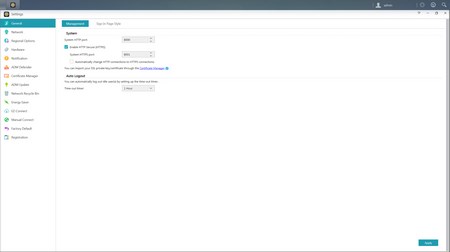
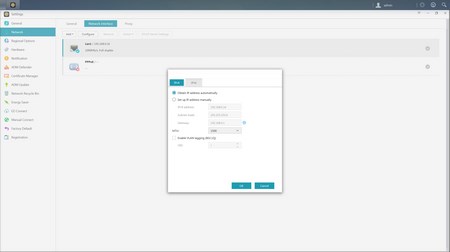
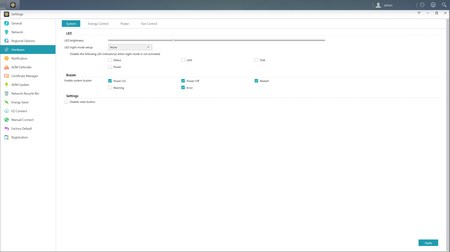
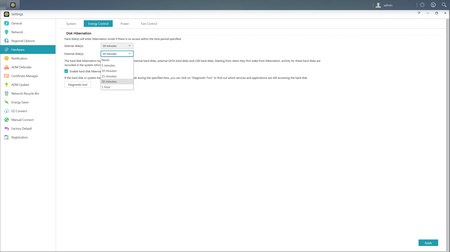
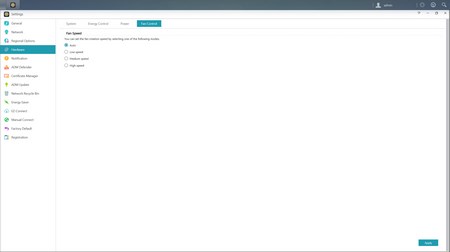
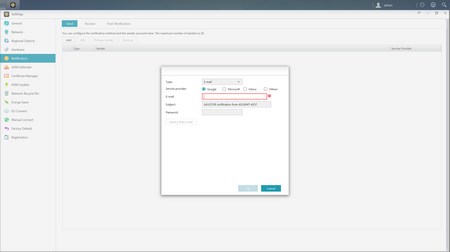
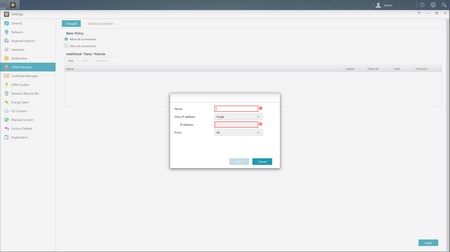
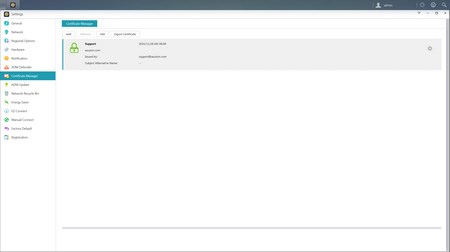
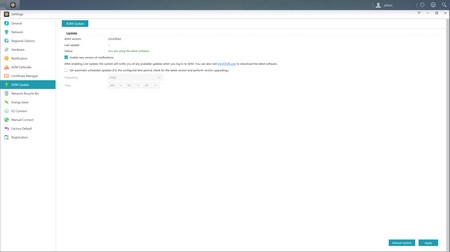
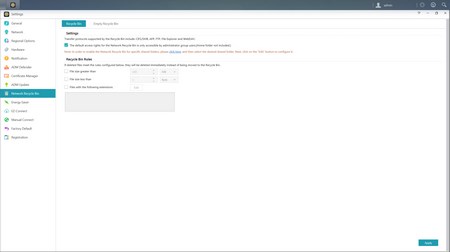
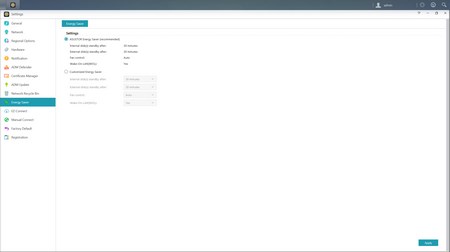
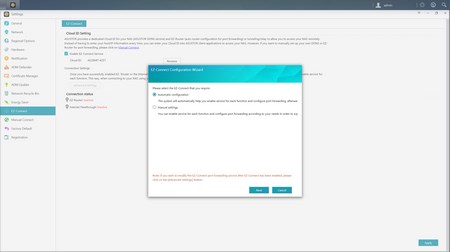
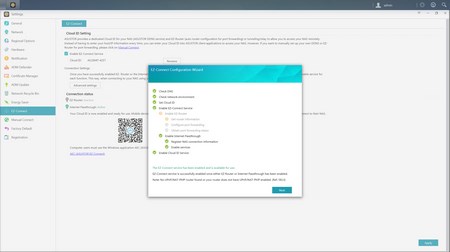
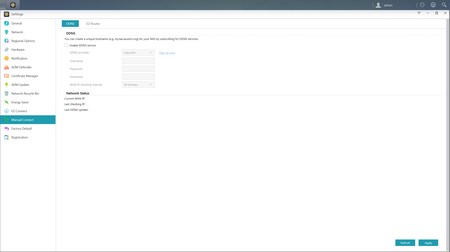
Pretty much everything else is placed inside the settings tab so from here you can adjust including the network settings, regional options, hardware options (LEDs/Buzzer/Fan control/Power settings/LCD text), various notification options, ADM defender (firewall), ADM update (manual or automatic), network recycle bin, energy saver (drive standby mode/fan control/wake on LAN), ease of access (Cloud Connect/EZ Router/DDNS), factory default settings and product registration.
From the Download Server tab not only can you download files using the BitTorrent Client but you can also use it to download files directly from HTTP/FTP.
ASUSTOR has launched a VPN server software which allows you to setup your very own virtual private network.
One more new app is the Hi-Res Player which as you can see grabs information from the internet for the tracks it detects.
The SoundsGood application allows streaming of music onto mobile devices and once again it looks a lot better compared to its predecessor.
ASUSTOR has added more camera models in their Surveillance Center it still needs work. I'm saying this not only because none of our 3 installed IP cameras (2xLinksys, 1xTRENDnet) was detected by the auto feature in terms of available IP camera models ASUSTOR still has a limited number.
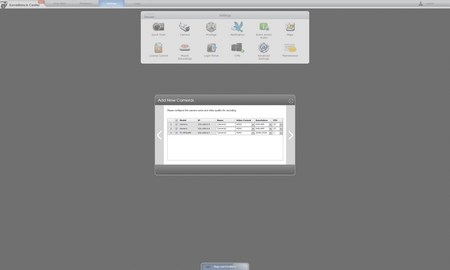

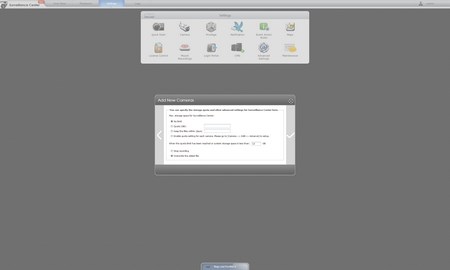
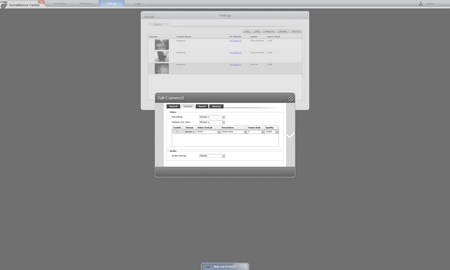
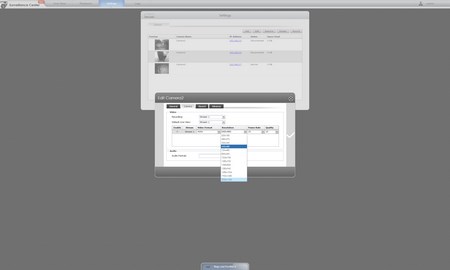
Still thanks to the extra manufacturers compared to last time, the ONVIF compatibility mode and some extra tweaking we were able to manually setup all 3 models.
ANDROID/IOS APPS
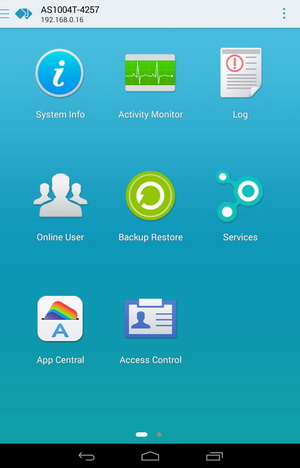
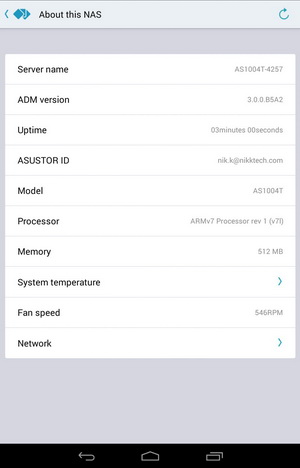
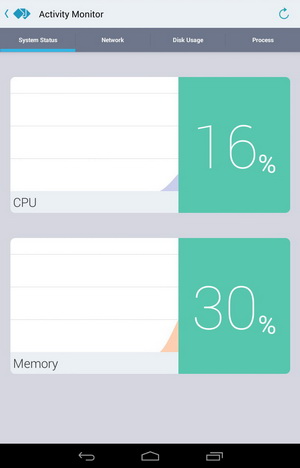
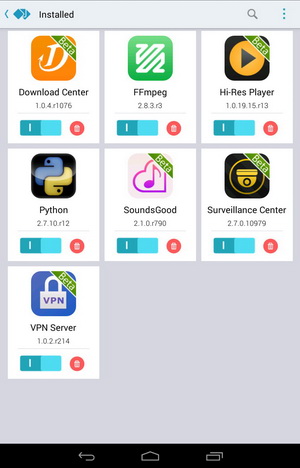
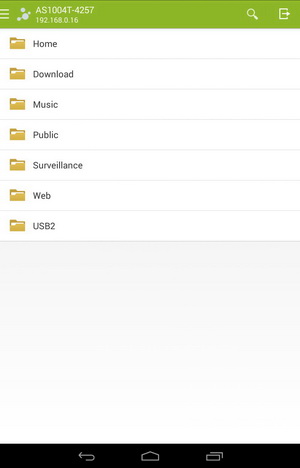
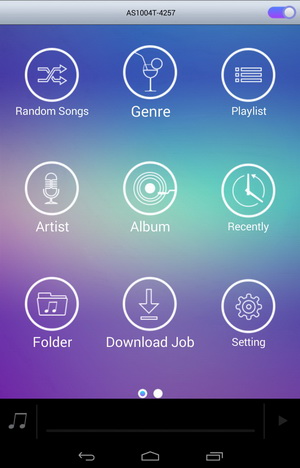


Just like in the past ASUSTOR still has several applications available for Android and iOS compatible devices including the AiMaster which you can use to access most unit functions and details, AiData which allows the user to access files stored in the NAS, Sounds Good for audio streaming, AiDownload for HTTP and BitTorrent downloads and the Surveillance app which grants you access to your IP camera feed (we recommend using the auto discovery with each app).
TESTING METHODOLOGY – PERFORMANCE RESULTS
Originally we had decided that since some of the NAS servers/devices we've tested in the past are no longer in our possession (naturally) we would keep performing the exact same testing methodology we did in the past for as long as possible in order to provide accurate comparison results. However since our real-life tests are not enough for some people we also decided to throw in ATTO and Crystal Disk Mark to cover the more demanding users. However as always we will be using a single Seagate Constellation ES.3 4TB SATA III and up to 10 Seagate Enterprise NAS 6TB SATA III hard disk drives with 3.5” compatible units (we switched to 6TB models for RAID tests since May 2017) and up to two (for now) Enterprise Capacity 2.5 HDD V3 2TB SATA III HDDs with 2.5” compatible units to perform several upload/download tests with 10.9GB (Single) and 40,8GB (RAID) files. Tests are repeated a total of 4 times after which we record the average numbers (from the 4 peak ones) into our charts. The network device used for 1GbE tests is the same Netgear D7800 Gigabit VDSL Modem/Router we’ve been using lately when performing tests on NAS servers. Since the 25th of June 2015 for 10GbE tests we’ll be using a Netgear ProSafe XS712T 10G Smart Switch and an Intel XT540-AT2 10GbE PCIe card (10GbE compatible NAS cards will be provided from each company and stated in each review).
SINGLE DISK TESTS
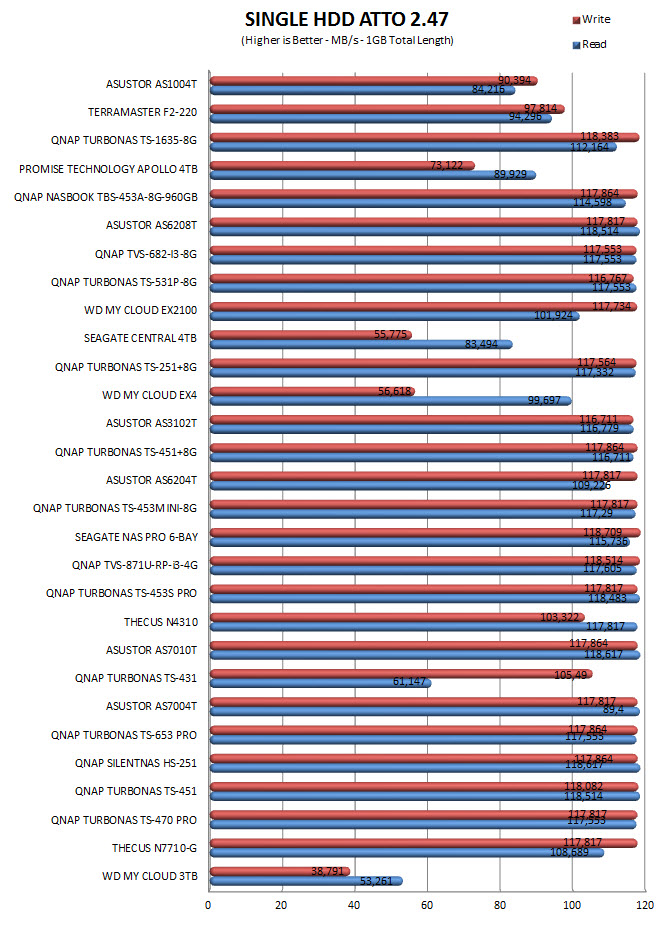
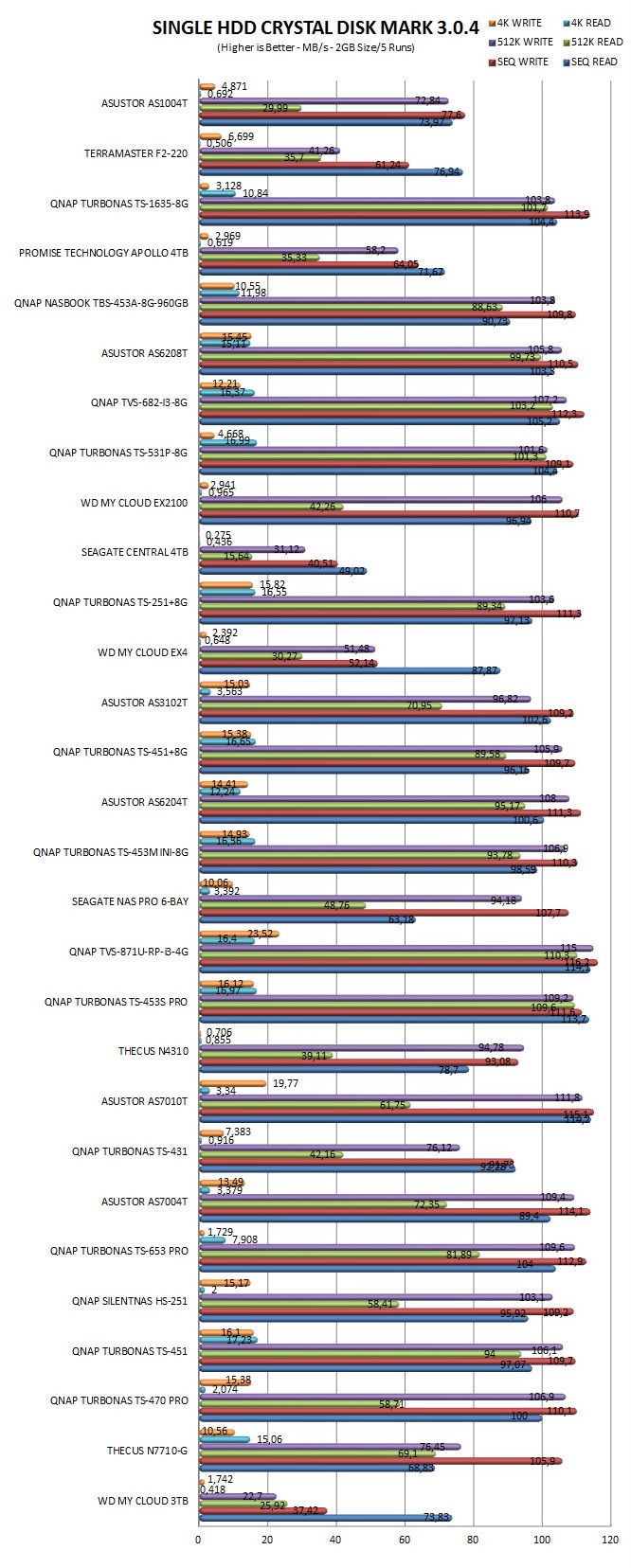

RAID TESTS
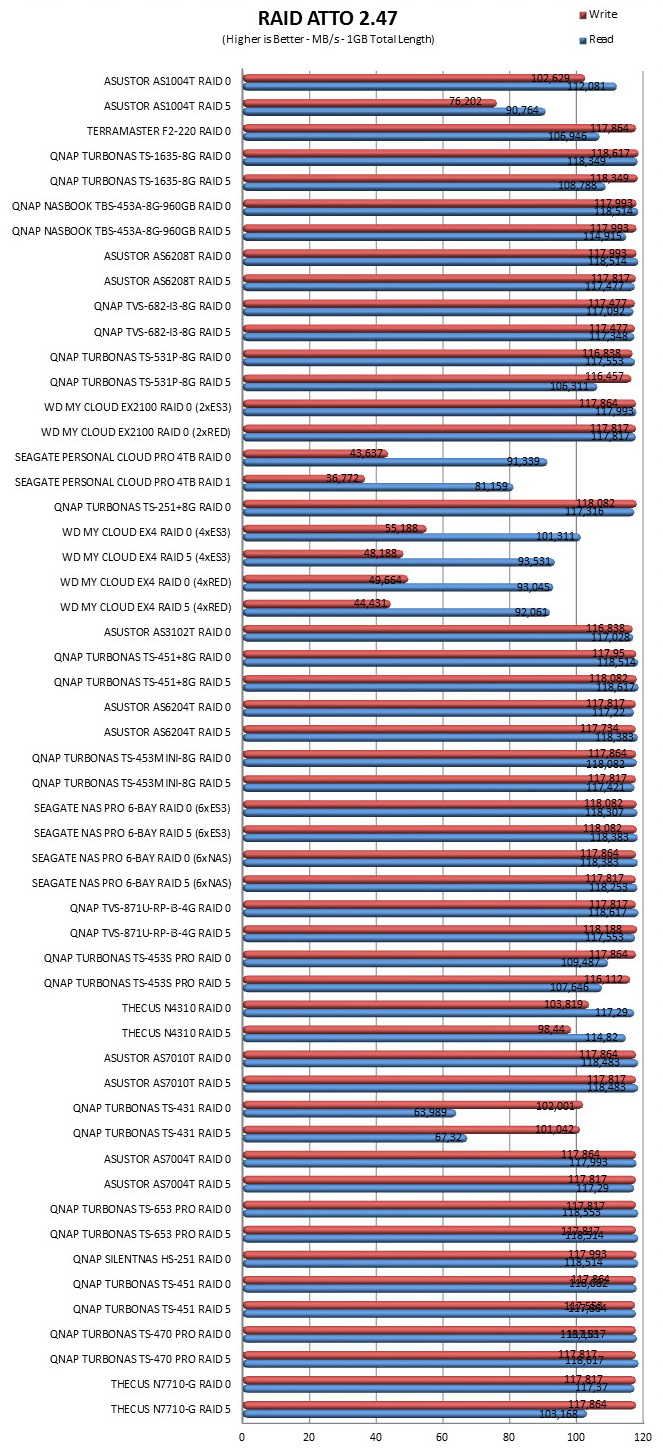


TEST RESULTS – TEMPERATURES / CONSUMPTION / NOISE
TEMPERATURES

POWER CONSUMPTION

NOISE LEVELS

CONCLUSION
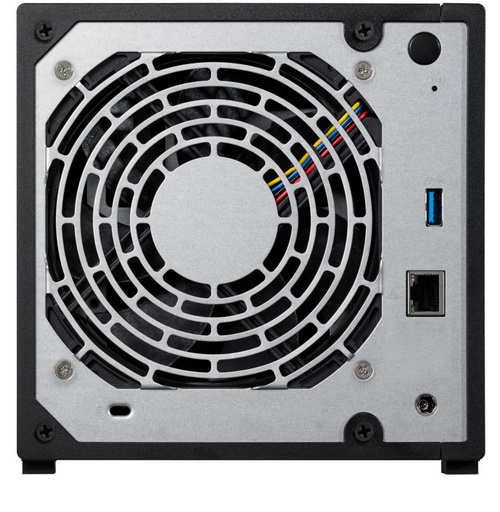
The AS1004T NAS by ASUSTOR may not be the fastest model in our charts nor is it the most feature-packed one but it was never ment to be any of those things. Instead ASUSTOR wanted to design and manufacture a model for home and office use ideal for people looking for an affordable multi-bay NAS with superior data sharing capabilities, low power consumption, several smart apps for remote management and a user friendly OS with plenty of available features to cover even the most demanding users. Unfortunately all is not great so as mentioned earlier the AS1004T can’t take the role of a media player not only because it lacks an HDMI video output but also because it’s Marvell Armada SoC is simply not powerful enough. This of course is not something new since pretty much every entry-level NAS in the market has that exact same limitation. Our two only “issues” with the AS1004T are about its compatibility only with 3.5” drives and the non-expandable RAM since 512MB might not be enough for some people (the second we see a lot however with similar models).
Through all the years we’ve reviewed ASUSTOR products we’ve noticed that they are aggressively priced to hit their competition and the same applies for the AS1004T since it can be currently found for USD249 inside the USA (Amazon.com) and for 266Euros inside the EU (Amazon.co.uk). This price tag puts the AS1004T in the lower price segment for 4 bay NAS models so ASUSTOR has accomplished their primary goal. Bottom line if you don’t care about its media capabilities and you just want a affordable NAS that can do pretty much everything else the AS1004T is a good option and that’s why we highly recommend checking it out.
PROS
- Overall Performance
- ADM 3.0.0 Operating System (User Friendly)
- Low Power Consumption
- Android / iOS Apps
- Two USB 3.0 Ports
- Single / JBOD / RAID 0 / RAID 1 / RAID 5 / RAID 6 / RAID 10 Modes
- Price (For Some)
CONS
- Compatible Only With 3.5” Drives
- Non Expandable RAM (Only 512MB)
- Noise Levels

 O-Sense
O-Sense





